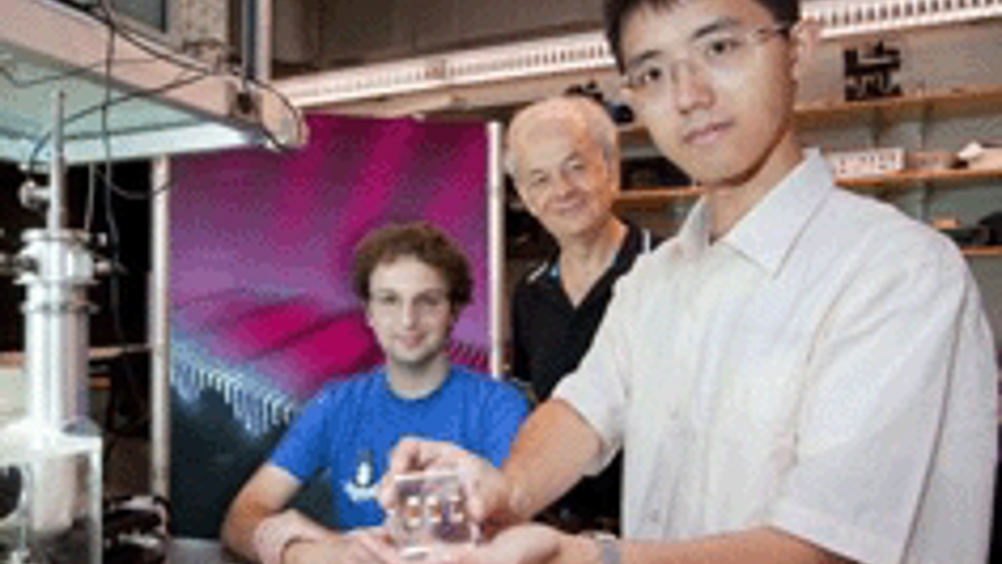Scientists demonstrate terahertz semiconductor laser
Applied scientists from Harvard University and Leeds University have demonstrated a new terahertz (THz) semiconductor laser that emits beams with a much smaller divergence than conventional THz laser sources.

THz rays (T-rays) can penetrate paper, clothing, plastic and many other materials, making them ideal for detecting concealed weapons and biological agents, imaging tumours without harmful side-effects, and spotting defects, such as cracks, within materials. THz radiation is also used for high-sensitivity detection of tiny concentrations of interstellar chemicals.
However, traditional systems for generating and detecting T-Rays are expensive, often costing in excess of £100,000.
Federico Capasso, from Harvard’s School of Engineering and Applied Sciences, said: ‘Unfortunately, present THz semiconductor lasers are not suitable for many of these applications because their beam is widely divergent — similar to how light is emitted from a lamp. By creating an artificial optical structure on the facet of the laser, we were able to generate highly collimated [tightly bound] rays from the device. This leads to the efficient collection and high concentration of power without the need for conventional, expensive, and bulky lenses.’
Register now to continue reading
Thanks for visiting The Engineer. You’ve now reached your monthly limit of news stories. Register for free to unlock unlimited access to all of our news coverage, as well as premium content including opinion, in-depth features and special reports.
Benefits of registering
-
In-depth insights and coverage of key emerging trends
-
Unrestricted access to special reports throughout the year
-
Daily technology news delivered straight to your inbox










Water Sector Talent Exodus Could Cripple The Sector
'Capricious changes of priority by the general public'?!? Surely the public would demand both sufficient water supply and sufficient waste...